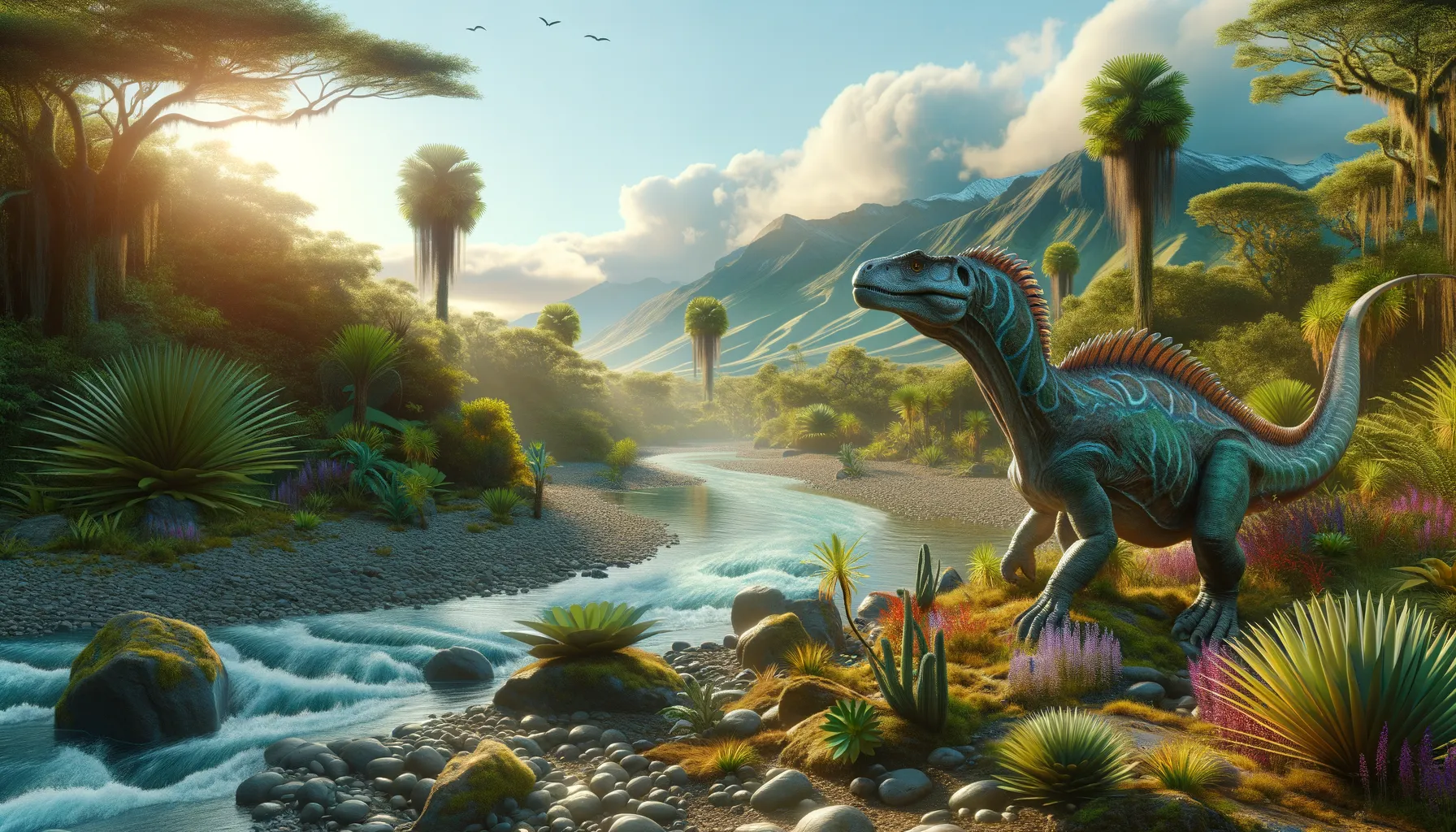
Spondylosoma
Unearthing ancient mysteries from Brazil.
Period
Triassic
Length
Around 5 meters in length.
Height
Possibly around 2 meters tall.
Weight
Estimated at about 300 to 400 kg.
Spondylosoma was a prehistoric reptile from the Triassic period. Known from partial remains, it is still a topic of debate whether it was a dinosaur or a similar archosaur. Its discovery in Brazil adds to the diversity of Triassic fauna in South America. Though not much is known about it, Spondylosoma helps fill in gaps of our understanding of early dinosaur evolution and their relatives during a pivotal time in geological history.
Diet
Spondylosoma was likely a herbivore, feeding on the lush vegetation available during the Triassic period. Its diet might have included ferns, cycads, and other early plant life.
Hunting
While it was not a hunter, Spondylosoma may have had to defend itself from carnivorous predators. It likely relied on its size and potential group behavior to deter attackers.
Environmental challenges
Spondylosoma lived in a time of significant geological and climatic shifts. It would have faced challenges such as fluctuating climates and the competition for resources. The region where it lived was likely subject to volcanic activity and other natural events that shaped its environment over time. These events required adaptability to survive and thrive.
Speed
Likely moderate for its time.
Lifespan
Estimated around 20-30 years.
First discovery
First discovered in Brazil in 1936.
Fun Facts
- Spondylosoma is a dinosaur genus discovered in Brazil, and its name means 'vertebrae body'.
- The fossils of Spondylosoma were believed to have been from the Triassic Period, approximately 228 to 208 million years ago.
- Spondylosoma is known from very fragmentary remains, making it one of the lesser-known dinosaurs.
- There has been some debate about whether Spondylosoma is a distinct dinosaur or similar to another dinosaur known as Staurikosaurus.
- As a dinosaur, Spondylosoma would have been a bipedal carnivore, likely running on two legs.
- The fossils of Spondylosoma were discovered in the famous "Santa Maria Formation" in Brazil, a site known for its abundance of Triassic creatures.
- Spondylosoma has helped scientists understand more about the early evolution of dinosaurs in South America.
Growth and Development
Spondylosoma would have grown rapidly to reach maturity. Its development likely relied on dietary availability and environmental conditions. Some features suggest a combination of rapid early growth followed by a slower pace as reaching adulthood. Understanding this growth pattern helps paleontologists make assumptions about its place in the evolutionary tree.
Habitat
This dinosaur lived in what is now Brazil, a region that was a diverse ecosystem during the Triassic. The environment included a mix of forests and open areas, providing a suitable habitat for a herbivore. Water sources such as rivers or lakes would have been crucial to its survival, shaping its migratory and living patterns.
Interaction with other species
Spondylosoma likely coexisted with various prehistoric reptiles and early dinosaurs. It would have shared its habitat with both herbivores and carnivores, influencing its social and survival behaviors. To cope with predation threats, it may have adopted living in groups for added protection. These interactions were crucial for the ecological balance during their period.
Natural lifespan
Spondylosoma likely lived for 20-30 years in the wild.
Reproduction
As with many early reptiles, Spondylosoma would have reproduced by laying eggs. This method allowed for a greater number of offspring, increasing the chances of survival in uncertain environments. Nurturing behavior, if any, is not understood, as fossil evidence is scarce.
Social behaviour
Spondylosoma might have exhibited some form of herd behavior. This social structure could have helped with protection from predators. Social interactions might have included basic communication signals and group travel for foraging. Understanding these behaviors provides insight into its lifestyle and survival strategies.
Fossil locations
Fossils attributed to Spondylosoma have been found primarily in Brazil. These discoveries have played a crucial role in understanding the dinosaur fauna of South America. Although the remains are incomplete, they contribute valuable information to the study of Triassic life. Ongoing research may yet uncover more about its geographical range and adaptations.
